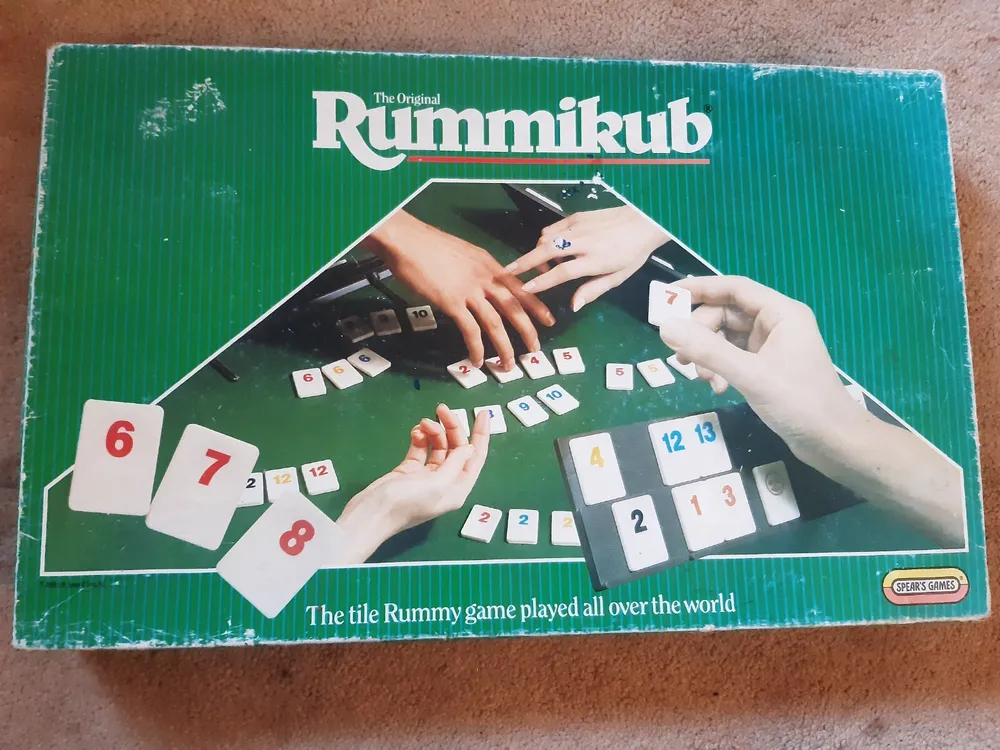Rummikub (1977)
Rummikub is a popular and significant board game with a fascinating history dating back over 70 years. The game was invented by Ephraim Hertzano, a Romanian-born Jew, who emigrated to the British Mandate of Palestine in the 1940s. The game gained popularity in the 1970s when it was featured on the Johnny Carson Show, and it has since become a staple in many homes.
Game Components of Rummikub
How To Setup Rummikub
To set up Rummikub, place all the tiles face down in the center of the table and mix them up. Each player draws a tile, and the player with the highest-valued tile starts the game. Players then return their tiles to the mix and redraw 14 tiles each to place on their racks. The remaining tiles stay face down in the center.
Gameplay Mechanics and Game Objective
Player Experience
Rummikub offers a blend of strategy and luck, making it engaging for players of various skill levels. The game encourages strategic thinking as players must see patterns in the tiles on the table and manipulate them to get rid of their tiles. The satisfaction of moving multiple tiles to play just one from your rack is a highlight of the game. However, the game can be affected by draw luck, where an unlucky player might struggle to make any plays.
Pros
Cons
Personal Thoughts on Rummikub
Rummikub is ideal for families and casual gamers who enjoy a mix of strategy and luck. It’s a great game for social gatherings due to its simplicity and the engagement it provides. While it may not be as complex as modern designer games, its enduring popularity since the 1970s speaks to its timeless appeal. It’s particularly suited for those who enjoy games like Gin Rummy or Mahjong and are looking for a tile-based alternative.
We are supported by our audience. When you purchase through links on our site, we may earn an affiliate commission, at no extra cost for you. Learn more.

